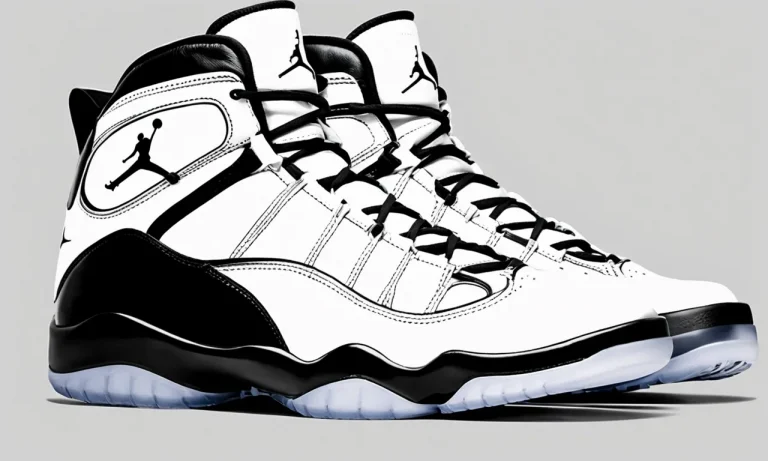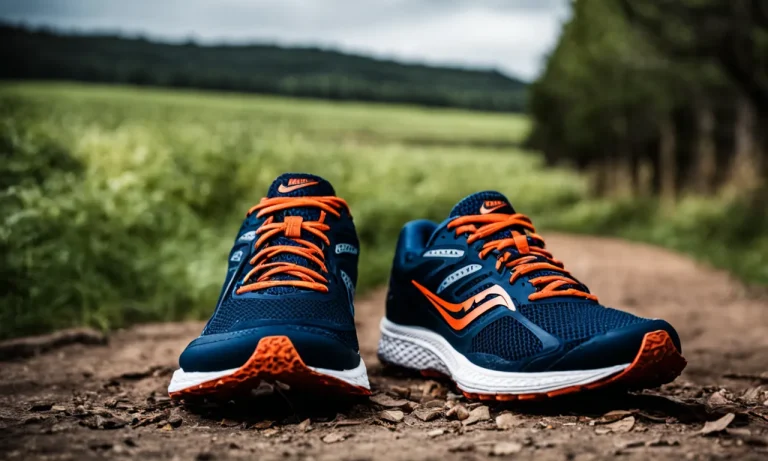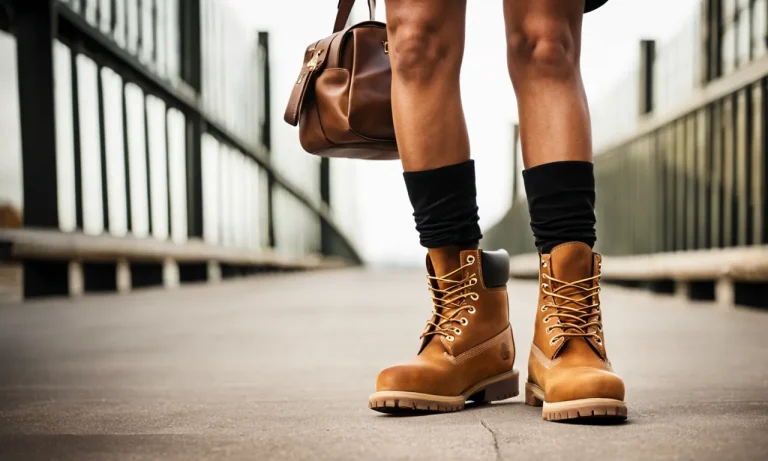With winter weather approaching, it’s time to start thinking about the right footwear to keep your feet warm and dry. If you live in an area that sees both rain and snow, you may be wondering whether to invest in a pair of snow boots or rain boots.
Both have their advantages—but which is the better choice?
If you’re short on time, here’s the quick answer: For most cold, wet climates, a solid pair of waterproof winter snow boots is your best bet for versatility, traction, and warmth. But read on for an in-depth comparison of rain boots vs. snow boots to help you decide.
In this comprehensive guide, we’ll compare snow boots and rain boots across a variety of factors including warmth, waterproofing, traction, comfort, style, and cost. We’ll also offer tips for choosing the best winter boots for your climate and needs.
Warmth and Insulation
When it comes to keeping your feet warm in cold weather conditions, snow boots and rain boots differ significantly in terms of insulation. Snow boots are specifically designed to provide superior warmth and insulation, making them the ideal choice for freezing winter temperatures.
These boots are constructed with thick insulation materials such as wool, fleece, or synthetic materials that effectively trap heat and keep your feet cozy even in subzero temperatures.
Snow boots have thicker insulation using wool, fleece, or synthetic materials
Snow boots are engineered with thick layers of insulation, typically made of wool, fleece, or synthetic materials. These materials are known for their excellent heat retention properties, ensuring that your feet stay warm and comfortable even in the coldest of climates.
The insulation in snow boots acts as a barrier to prevent cold air from seeping in and helps maintain a consistent temperature inside the boots.
Rain boots have little to no insulation
On the other hand, rain boots are not primarily designed for insulation. They are mainly focused on providing protection against wet conditions. As a result, rain boots typically have little to no insulation, as their primary function is to keep your feet dry and protected from rain, puddles, and wet environments.
While rain boots may offer some level of warmth due to their waterproof nature, they are not ideal for extremely cold temperatures.
Snow boots are better for frigid winter weather
If you live in an area where winters are harsh and temperatures plummet below freezing, snow boots are the clear winner in terms of warmth and insulation. The thick insulation in snow boots helps to retain heat and keep your feet warm, even in frigid conditions.
Whether you’re shoveling snow, building a snowman, or enjoying winter activities, snow boots are the perfect choice to keep your feet snug and protected from the bitter cold.
Waterproofing Ability
When it comes to keeping your feet dry in wet conditions, both snow boots and rain boots are designed to be 100% waterproof. This means that they are specially crafted to prevent water from seeping into the boots and reaching your feet.
Whether you’re walking through slushy snow or puddles of rainwater, both types of boots will effectively keep your feet dry.
Look for waterproof membranes like Gore-Tex in snow boots
If you’re specifically looking for boots to wear in snowy conditions, it’s worth considering snow boots with waterproof membranes like Gore-Tex. This innovative technology is highly effective at keeping your feet dry while still allowing them to breathe.
The microscopic pores in the Gore-Tex membrane are small enough to prevent water molecules from entering the boot, but large enough to allow moisture and vapor to escape, keeping your feet comfortable and dry throughout the day.
Many reputable brands offer snow boots with Gore-Tex technology, ensuring that your feet stay dry even in the harshest winter weather.
PVC and rubber rain boots keep feet dry without insulation
On the other hand, rain boots are typically made from PVC or rubber, which are naturally waterproof materials. These boots are designed to keep your feet dry in rainy conditions, but they don’t usually provide much insulation.
This makes them great for warmer climates or when you don’t need the added warmth of snow boots. PVC and rubber rain boots are easy to clean and maintain, making them a practical choice for those who frequently encounter wet or muddy environments.
Traction and Grip
When it comes to traction and grip, snow boots and rain boots differ significantly. Snow boots are specifically designed to provide excellent traction on snowy and icy surfaces. They are equipped with deep lugged soles that have aggressive tread patterns.
These lugs dig into the snow and ice, providing you with the stability and grip you need to confidently navigate through slippery conditions.
Snow boots have deep lugged soles for snow and ice
The deep lugged soles of snow boots are what make them ideal for winter weather. The deep treads are designed to prevent snow from accumulating on the soles, allowing you to maintain a firm grip on the ground.
This feature is particularly important when walking on icy surfaces, as it helps to reduce the risk of slips and falls. So, if you live in an area with heavy snowfall or icy conditions, snow boots with deep lugged soles are definitely a wise choice.
Rain boots have flat, smooth soles lacking traction
On the other hand, rain boots are primarily designed to keep your feet dry in wet conditions. Their soles are typically flat and smooth, lacking the deep treads found in snow boots. While this design is great for walking through puddles and wet streets, it may not provide the same level of traction and grip on snowy or icy surfaces.
If you plan on wearing rain boots in snowy conditions, be cautious as they may not offer the same stability and grip as snow boots.
Snow boot treads provide more stability in slippery conditions
The deep treads on snow boots provide more stability in slippery conditions compared to rain boots. This is particularly important when walking on uneven terrain or steep hills covered in snow or ice. Snow boots’ aggressive tread patterns help to maximize contact with the ground, reducing the chances of slipping or sliding.
So, if you’re looking for footwear that can handle the toughest winter conditions, snow boots with their superior traction and grip are the way to go.
For more information on snow boots and rain boots, you can visit www.rei.com or www.weather.gov.
Comfort and Fit
Snow boots often have removable insoles for arch support
When it comes to comfort and fit, snow boots have some unique features that make them a great choice. One of the key advantages of snow boots is that they often come with removable insoles. These insoles provide extra cushioning and arch support, ensuring that your feet stay comfortable even during long walks in the snow.
Having the ability to remove and replace the insoles also allows you to customize the fit of your snow boots to your liking, making them a comfortable and personalized option.
Rain boots can feel cramped with narrow calf openings
On the other hand, rain boots may not offer the same level of comfort and fit as snow boots. One common issue with rain boots is that they can feel cramped, especially for individuals with wider calves.
Many rain boots have narrow calf openings, which can make it difficult to slip them on and off comfortably. This can lead to discomfort and restrict movement, particularly if you’re wearing thicker socks or multiple layers.
It’s important to consider your calf size and the design of the rain boots before making a purchase.
Snow boots secure feet better with cinches, straps, and draws
When it comes to securing your feet and keeping them snugly in place, snow boots have the upper hand. Unlike rain boots, snow boots often feature additional mechanisms such as cinches, straps, and draws to ensure a secure fit.
These adjustable features allow you to tighten the boots around your ankles, preventing any potential snow or moisture from seeping in. This not only improves comfort but also helps to keep your feet warm and dry in snowy conditions.
Style and Appearance
Both come in a variety of stylish colors and designs
When it comes to style and appearance, both snow boots and rain boots offer a wide range of options. Whether you prefer bold and vibrant colors or simple and understated designs, you can find a pair of boots to suit your personal style.
Snow boots often come in classic winter colors like black, brown, and white, while rain boots come in a variety of fun and playful patterns. From floral prints to polka dots, there is no shortage of options to choose from.
Snow boots are clunkier while rain boots are more streamlined
One noticeable difference in the style of snow boots and rain boots is their overall silhouette. Snow boots tend to be bulkier and more substantial in order to provide insulation and protect your feet from the cold and snow.
On the other hand, rain boots are typically more streamlined and sleek in design. They are meant to be lightweight and easy to move in, making them a great option for rainy days when you still want to look stylish.
Rain boots offer more versatility for non-winter outfits
While snow boots are specifically designed for winter weather, rain boots can be worn year-round. Their versatility makes them a popular choice for fashion-forward individuals who want to stay dry and stylish in any season.
Pair your rain boots with a cute dress and a raincoat for a chic rainy day look, or wear them with jeans and a sweater for a more casual and trendy outfit. With rain boots, you don’t have to sacrifice style for functionality.
Cost and Value
Snow boots range from $50-$400 for top brands
When it comes to cost, snow boots vary greatly depending on the brand and features. Top brands such as North Face or Columbia can range from $50 to $400. These boots often come with advanced technologies like waterproofing materials and insulation, which justify their higher price tag.
However, it’s important to note that there are also more affordable options available that provide great value for money.
Basic rain boots cost $30-100
On the other hand, basic rain boots are generally more budget-friendly. They typically range from $30 to $100, depending on the brand and material. While they may not offer the same level of insulation or advanced features as snow boots, they do a great job of keeping your feet dry and protected during rainy days.
If you’re looking for a cost-effective option, rain boots are a good choice.
Snow boots may provide more value with insulation and traction
When considering value, snow boots often come out on top due to their insulation and traction features. These boots are designed to keep your feet warm and dry in extremely cold and snowy conditions. The insulation helps to retain heat, while the traction provides grip on slippery surfaces.
This added value can make a significant difference in your comfort and safety when facing harsh winter weather.
According to a study conducted by Outside Online, snow boots with insulation can keep your feet warm even in temperatures as low as -40 degrees Fahrenheit. This kind of performance is unmatched by regular rain boots, which are not designed for extreme cold.
Additionally, the traction provided by snow boots can greatly reduce the risk of slipping and falling on icy surfaces.
Ultimately, the choice between snow boots and rain boots depends on your specific needs and budget. If you frequently encounter snowy and cold conditions, investing in a pair of high-quality snow boots may be a wise decision.
However, if you primarily deal with rainy days and occasional light snow, rain boots can provide sufficient protection at a lower cost.
Conclusion
When selecting winter footwear, it’s important to consider your climate, primary activities, and individual needs. Those who encounter frequent harsh winter precipitation will get more versatility and performance from a top-quality pair of insulated, waterproof snow boots.
But if you mainly need protection from damp weather and occasional showers, an affordable pair of rain boots may suffice.
Take the time to identify the features that matter most, whether it’s keeping your feet toasty in frigid conditions or maintaining your footing on slick surfaces. With the right pair of boots, you’ll stay dry and comfortable all winter long.






